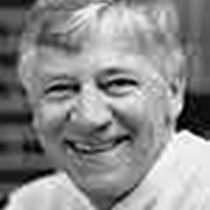Astoria, Ft. Clatsop, Cape Disappointment, & the Bar of the Columbia
The final full day of our journey in the wake of Lewis and Clark was a full one, mainly spent on shore. The Sea Lion docked at the historic town of Astoria, Oregon before sunrise and after breakfast we embarked on multiple activities.
A cool but one-in-a-hundred bluebird day greeted us as we headed for the Columbia Maritime Museum. This fine collection gave us an appreciation for the challenges posed to vessels over the years, and to the present, by the bar at the mouth of the Columbia. We also gained a better understanding of the combination of factors which prevented this great river of the West from being discovered until 1792, by the American Robert Gray.
Buses took us, mid-morning, from the Maritime Museum to the National Historic Park site at Ft. Clatsop where the Corps of Discovery spent the winter of 1805-06. After an informative introduction from one of the Park Rangers we had the opportunity to walk the ground where the Corps had tread, including the full size replica of the Fort which housed them from December, 1805 until March 23, 1806. We also shopped in the visitor center bookstore, one of the best stocked sources of Lewis and Clark related material.
Lunch back on board the Sea Lion was followed by several afternoon options. Some chose to walk in Astoria, founded by John Jacob Astor in 1811 and the oldest town in the Pacific Northwest. Others availed themselves of the Astoria trolley line to gain even greater coverage of this fascinating town. Still another group bused to the hilltop vantage point of the Astoria Column for a fabulous vista of the region seldom seen in this area of frequent rain, fog, and overcast skies.
A fourth group also used bus transport to cross to the north side of the Columbia and visit Cape Disappointment, on the Pacific coast and the western most point reached by Lewis and Clark. We had one last chance to learn about the expedition from the excellent museum at the Cape, as well as to hike and conclude our visit to that area with one of the seven art installations of Maya Lin’s Confluence project, this one a concrete boardwalk to the ocean edge which summarizes the 4,133 mile journey of the expedition from St. Louis to the Pacific.
All returned to the Sea Lion by 5:00 p.m. and we followed the falling tide out for a view of the Columbia bar, that infamous nautical challenge we learned of during our morning visit to the Maritime Museum. Smooth water, a cloudless sky and magnificent sunset, bald eagles, blue herons and other birds added to the beauty of a day ending cruise.
The final full day of our journey in the wake of Lewis and Clark was a full one, mainly spent on shore. The Sea Lion docked at the historic town of Astoria, Oregon before sunrise and after breakfast we embarked on multiple activities.
A cool but one-in-a-hundred bluebird day greeted us as we headed for the Columbia Maritime Museum. This fine collection gave us an appreciation for the challenges posed to vessels over the years, and to the present, by the bar at the mouth of the Columbia. We also gained a better understanding of the combination of factors which prevented this great river of the West from being discovered until 1792, by the American Robert Gray.
Buses took us, mid-morning, from the Maritime Museum to the National Historic Park site at Ft. Clatsop where the Corps of Discovery spent the winter of 1805-06. After an informative introduction from one of the Park Rangers we had the opportunity to walk the ground where the Corps had tread, including the full size replica of the Fort which housed them from December, 1805 until March 23, 1806. We also shopped in the visitor center bookstore, one of the best stocked sources of Lewis and Clark related material.
Lunch back on board the Sea Lion was followed by several afternoon options. Some chose to walk in Astoria, founded by John Jacob Astor in 1811 and the oldest town in the Pacific Northwest. Others availed themselves of the Astoria trolley line to gain even greater coverage of this fascinating town. Still another group bused to the hilltop vantage point of the Astoria Column for a fabulous vista of the region seldom seen in this area of frequent rain, fog, and overcast skies.
A fourth group also used bus transport to cross to the north side of the Columbia and visit Cape Disappointment, on the Pacific coast and the western most point reached by Lewis and Clark. We had one last chance to learn about the expedition from the excellent museum at the Cape, as well as to hike and conclude our visit to that area with one of the seven art installations of Maya Lin’s Confluence project, this one a concrete boardwalk to the ocean edge which summarizes the 4,133 mile journey of the expedition from St. Louis to the Pacific.
All returned to the Sea Lion by 5:00 p.m. and we followed the falling tide out for a view of the Columbia bar, that infamous nautical challenge we learned of during our morning visit to the Maritime Museum. Smooth water, a cloudless sky and magnificent sunset, bald eagles, blue herons and other birds added to the beauty of a day ending cruise.



